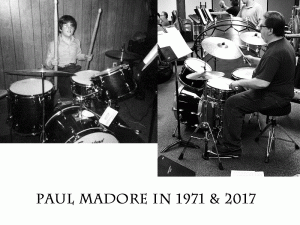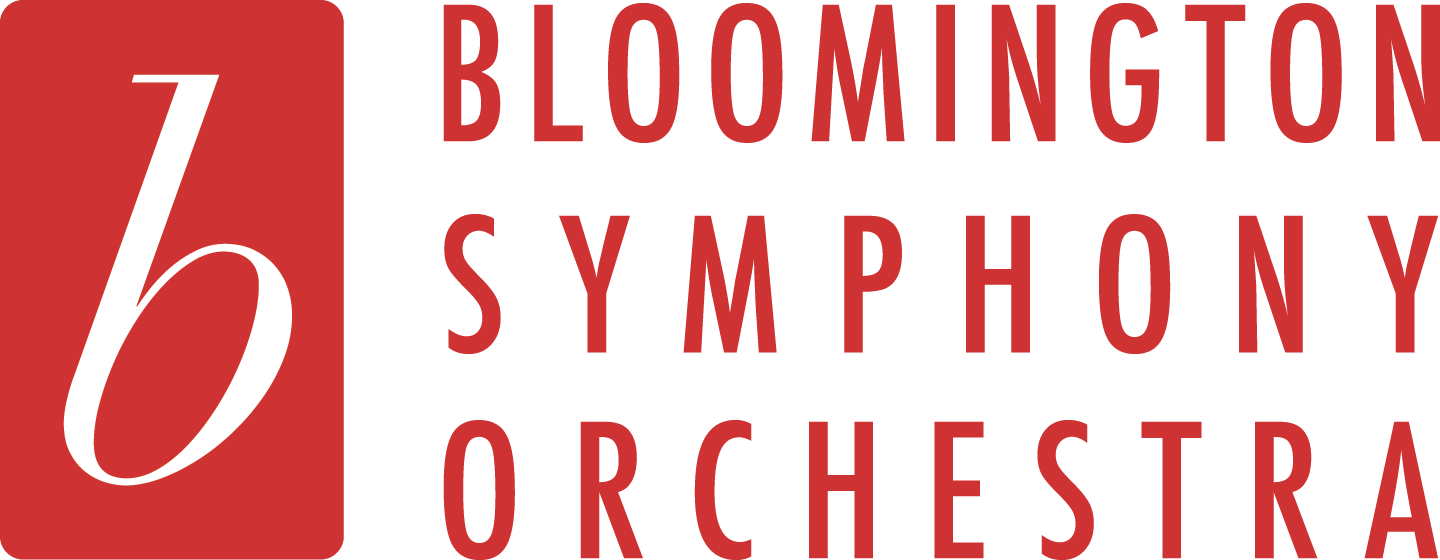This month’s Musician’s Musings was written by BSO Principal Percussionist, Paul Madore.
From Jazz to Classical
As far back as I can remember, I’ve always loved music. So much so that my earliest childhood memories center on drums, phonograph records, or a combination of the two. I distinctly remember pounding away on a Quaker Oats oatmeal canister, trying to play along with the calypso rhythms I heard as “Belafonte Sings of the Caribbean” spun around on our RCA “suitable for mono” portable record player. (Yes, I realize I’m showing my age here.)
Before I was old enough to read, I could go through my parents’ LP collection and pick out whatever they requested, much to my mother’s delight and bewilderment.
From there, it was a short leap from just listening to music to wanting to learn how to actually play it, and I begged my parents to let me take drum lessons. My mother spoke with a local drum instructor who advised her to wait until I reached the ripe old age of seven before making that commitment.
When my seventh birthday finally arrived, my parents could no longer delay the inevitable and told me I could start my drum lessons. I was so excited! I still remember my first lesson with Mr. Riccardo. He had a music studio set up in the finished basement of his house. As I walked down the stairs, I peered up at the photos on the wall of his trio playing at the “Marco Polo”, a local Italian restaurant that featured live music.
At the foot of the stairs was the main area of the basement, and as I rounded the corner, an alcove transformed itself into a musical Valhalla, with a piano, a stereo, and most importantly, a real set of 4-piece Slingerlands in blue sparkle finish! I had never seen a real drum set before, and was surprised to find a foot pedal behind the bass drum. Having previously only seen pictures of a drum set photographed from the front, I had somehow imagined that the bass drum’s only purpose was to support the small tom-tom and ride cymbal. Clearly I had much to learn…
Fast-forward to 6th grade, and I by now I was playing in a real rock and roll band! The original band name was “Mantissa”, which is some mathematical term that I’m still unfamiliar with. We quickly opted for the easier-to-understand and more picturesque “Red Moon”. We were a power trio of sorts, and did covers of classics like “Honky Tonk Women” and “Smoke on the Water”, along with some half-baked instrumental originals with inscrutable titles like “Japan” and “Corn Kernels”. I felt super-cool, because the other 2 guys were in high school, and here I was with them playing at high school dances that I would have been too young to attend, had I not been one of the performers on stage.
As I grew older, my musical tastes became more refined, and in addition to playing in the school concert band and jazz band, I enjoyed listening to jazz and funk, and tried to emulate the style of my favorite drummers. I was a big fan of that outdated musical hybrid term “Jazz/Rock”, and I immersed myself in the crisp drumming styles of Bobby Colomby (“Blood, Sweat and Tears”) and Danny Seraphine (“Chicago”).
When I was 15, I auditioned for and won a spot in the percussion section with “America’s Youth In Concert”, a nation-wide concert band and choral group that played such venues as Carnegie Hall in New York and the bicentennial in Philadelphia, before embarking on a month-long tour of Europe.
After graduating from high school, I attended Berklee College of Music in Boston, where I studied jazz theory and jazz drumming, played in various big band ensembles and received my Bachelor of Music degree in performance.
While living in Boston, I lived the aspiring “musician’s life” of working a day job to pay the bills, and playing various gigs at night to fulfill my musical passion. That template remained more or less intact, even after moving to Minnesota during the great Halloween storm of 1991.
Since moving to Minnesota, I became more involved in classical music, performing with the Dakota Valley Symphony, while continuing to play in various horn-driven funk/R & B bands, such as “Down Right Tight” and “Under Suspicion” and jazz bands such as “The Stan Bann Big Band” and “Beasley’s Big Band”.
My first experience performing with the BSO was back in 2003, when I was hired as an extra to play triangle and tam-tam in Mahler’s Second Symphony, “The Resurrection”. I was very impressed by the high level of musicianship of the players, and completely blown away by the magnitude of this magnificent work! Having at the time only a limited familiarity of Mahler’s music, I eagerly began exploring his other works and today consider Mahler one of my all-time favorite composers.
Around 2010 or so, I made the conscious decision to concentrate exclusively on performing orchestral music, primarily with the BSO, but also subbing with other orchestras, such as the Metropolitan Symphony Orchestra and Saint Paul Civic Symphony.
When approached about writing this edition of the Musician’s Musings, I was asked to write about my experiences moving from jazz to classical. I’ve always likened the idea of a musician playing different styles of music as akin to a skilled athlete playing different sports. Proficiency at one sport is no guarantee for success at another. And yet, there is a common ground that some people skilled in athletics share. The hand-eye coordination that is required in one game may present itself differently in another game’s execution, but that basic coordination will still be required in some shape or form.
It is the same in the world of music. Certainly there are common fundamental requirements in order to play the correct notes, sing the correct pitches, etc. Stylistically, though there can be many subtle and not-so-subtle differences. Each musical style presents its own inherent logic and set of rules with which a musician must be familiar, or risk sounding amateurish.
A good example of this is evident in Jazz music. When all the players are in sync rhythmically, the music is considered “swinging”. Jazz music is triplet-based, with a typical ride cymbal pattern driving the rhythm: quarter note, 1st & 3rd triplet, quarter note, 1st & 3rd triplet, etc. Though it’s played like triplets, this rhythm is often written as: quarter note, dotted 1/8th & 16th, quarter note, dotted 1/8th and 16th, etc.)
A common mistake for “legit” or classical musicians is to play this rhythm strictly as written, which sounds “square”, “unhip”, and definitely NOT swinging. In order to sound correctly, a certain creative license must be employed, which means the player must not play exactly what is written on the page.
On the flip side of the coin is the seasoned jazz musician, who may know all the standard tunes in the repertoire by heart, or by reading off a lead sheet (a sort of musical shorthand that shows just the melody line and the chord changes), but may not have the sight-reading skills necessary if called upon to sub for a symphony orchestra. And all those European musical terms might feel like a foreign language, because they actually are!
Of course, there are many versatile musicians these days who can bridge both jazz and classical styles. Perhaps the most famous is Wynton Marsalis, whose trumpet virtuosity has extended into highly acclaimed recordings and performances in both sound worlds.
Since orchestral music can have limited percussion parts (or no percussion at all, in some cases), I sometimes get asked if I get tired of waiting to play, or having to “count so many bars of rests” before making an entrance. On the contrary. One of the great things about performing as part of an orchestra is that you get to listen and bask in the collective sound of the group as a whole. This is true even when you’re not playing, sometimes even more so. While I love playing a busy, challenging part and the “go-for-broke” spirit that goes with it, it can be equally enjoyable to just sit back and listen. In fact, I’d rather listen to music that moves me even if there is no percussion, than to play something I don’t connect with emotionally just for the sake of playing. I’ve always believed that to be a good musician, you must first be a good listener. I can think of no greater thrill than being on stage with the BSO when we’re making music at our highest level.
